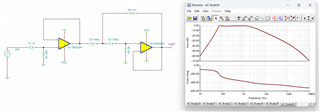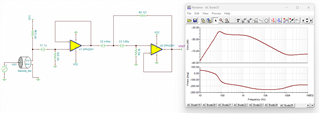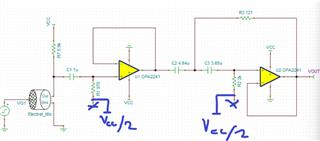Other Parts Discussed in Thread: OPA1671, OPA172
I'm designing a HPF for reducing the hum noise in audio signals
Even though OPA2241 has 2 internal opamp, the filter tool showing 2 seperate quantities of OPA2241 so getting confused.Can anyone please review it once? Attached the design filter report.





